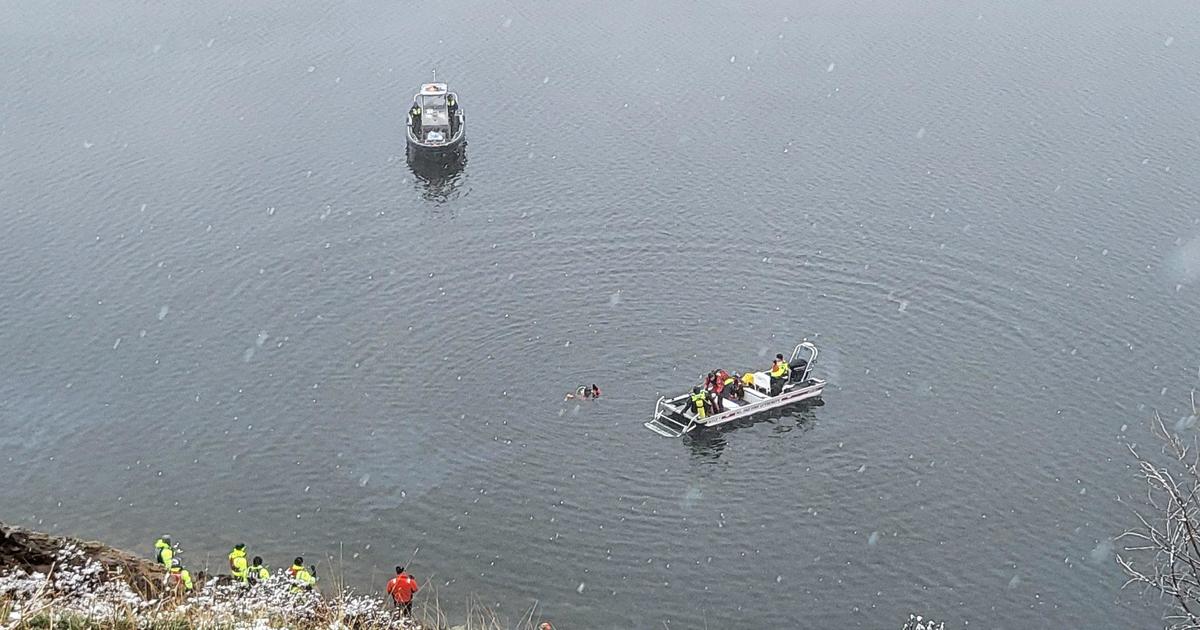How Can You Survive In Icy Water?
DENVER (CBS4) - He was a lucky boy, that 10-year-old Brenndan Daviet. Colorado State Trooper Dan Haley was heading to a movie nearby when Brenndan went into a pond after trying to reach a cell phone tossed out onto the thin ice.
"Adrenaline was totally in control, there was no doubt about that," Haley said.
Haley thinks he was actually in the ice longer than the boy. He was losing his ability to rescue himself.
"Every time I tried to get out it would break again ... I couldn't feel my hands, I couldn't feel my legs, I knew I was moving, but your mind's not thinking at that point."
Cold water can kill a person in very little time -- about 15 minutes if the temperature of the water is below freezing, 30 minutes if it is 32 to 40 degrees.
As ice season moves in over Colorado, rescuers are getting ready for rescues that often follow people's decisions to go out onto ice after something. One of the most common is a stranded dog.
"When we do our training in the winter, that's the only way we can actually tell whether the ice is safe to be on or not, is go out there cut a section out of the ice and take a look at it," Golden Fire Department Cpt. Aaron Giesick said.
They like to have eight inches of ice for a stable platform for training. Many ponds and lakes have different ice thicknesses.
"In Colorado, we get the sun year round so it can heat up the ground and thin it up a little at the edge. The farther you get out there the ice may be safer," Giesick said.
Runoff into the edges of ponds can also warm the water there.
The most immediate danger when going into cold water is probably drowning. When someone first hits cold water they gasp. That gasping can make them take in water. If they can get past that and stay afloat, people have been shown to survive for many minutes in cold water. The body, which is mostly water, is actually slow to change temperature. Children have been shown to survive an hour in cold water. The key may be protecting yourself.
First, you'll want to head back to the area of ice where you came in. That's ice that you know was able to support your weight. Try to get out if you can by kicking your legs. But don't wear yourself out. When you start moving you're increasing the blood flow to your arms and legs and by doing that, you're increasing the heat loss.
You may want to stay compact to keep heat in -- if it's possible.
"Kind of curl up in more or less a fetal position," Geisick said. "Holding your legs up there trying to float, keep your head above water, keeping the warmth in around your core."
Water pulls heat from the body at about 32 times the rate of air, so you'll want to get as much of your body exposed to air as possible. If it looks like a long wait for help, you may want to put your arms up on the ice. Leave your arms still and they may freeze to the surface, holding you up even if you lose consciousness.
"You'll at least buy yourself enough time hopefully that the rescuers can get there, get out there and take care of you," Giesick said.
And getting yourself too close to a person in the water is a bad idea. Use a rope, branch, ladder, whatever to reach out. Loop the rope around a person's body to pull. Once they're up on the ice, they need to roll and crawl away, not walk upright, which could lead to another collapse through the ice. But first is always calling for help.
Ice rescue teams can get people out if they can just learn to survive the few minutes needed for emergency teams to arrive. The mother of Brenndan Daviet was worried the other children with him might have gone in if patrolman Haley hadn't been there.
"If his friends would have tried to help him, it could have been three kids in the lake."
- Written by Alan Gionet



